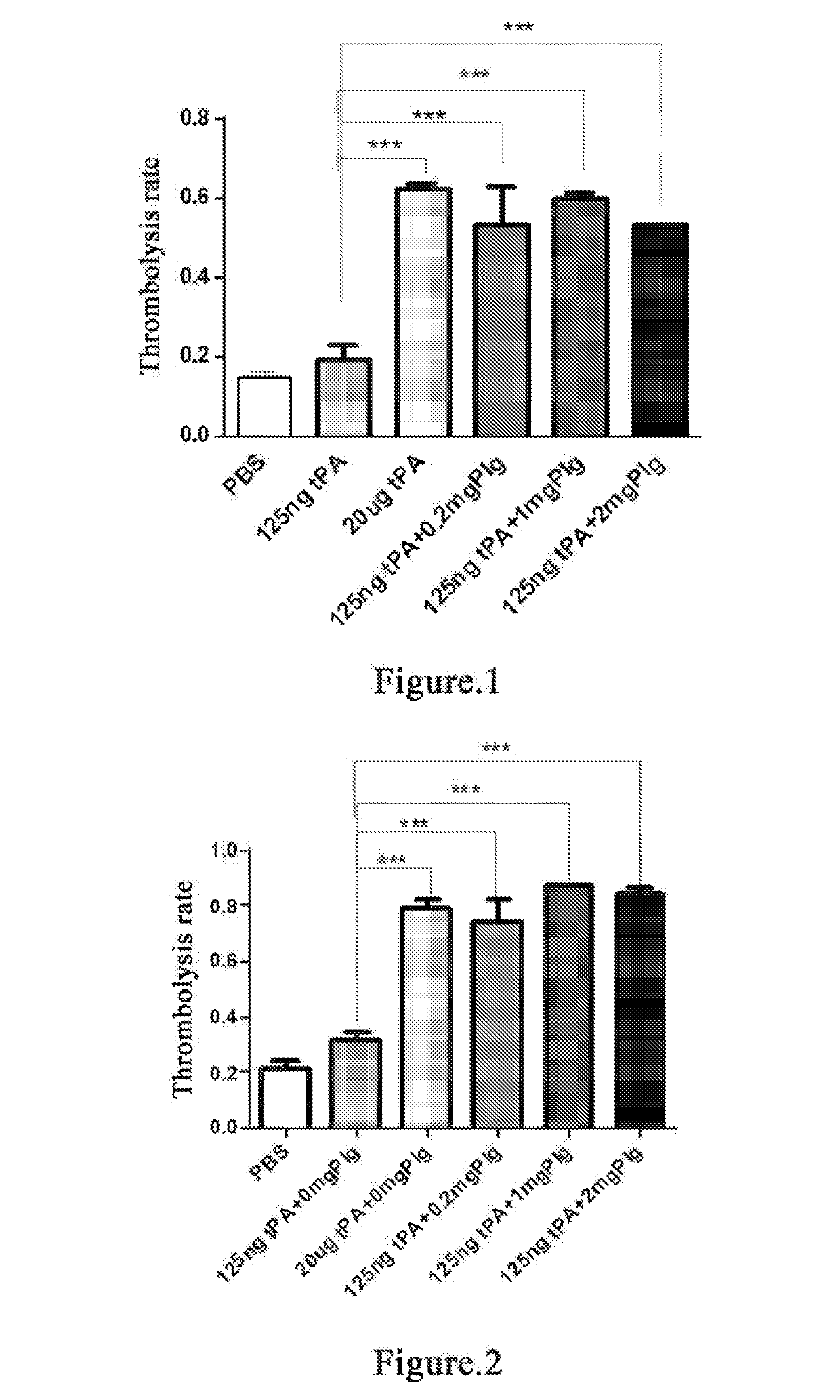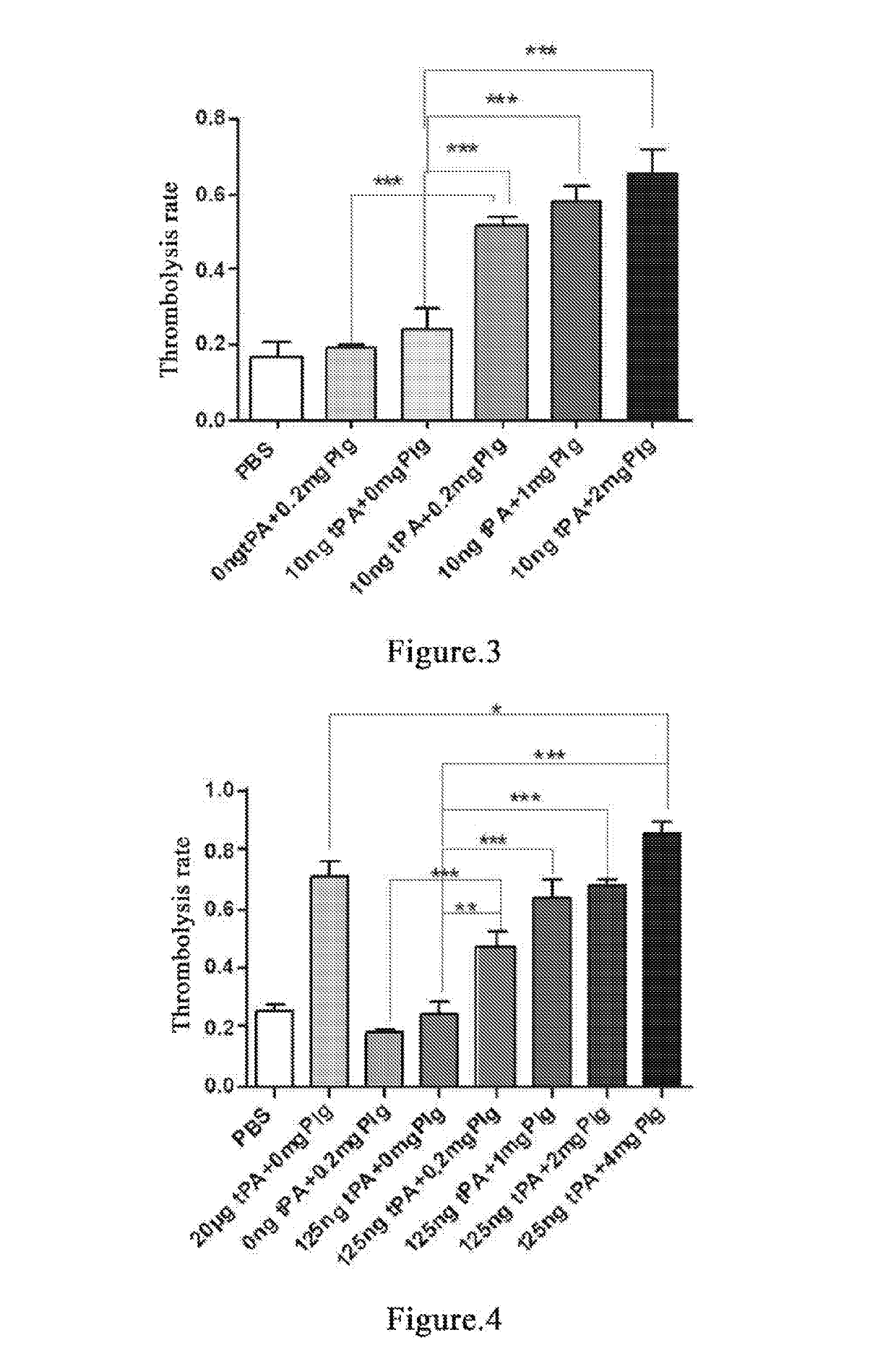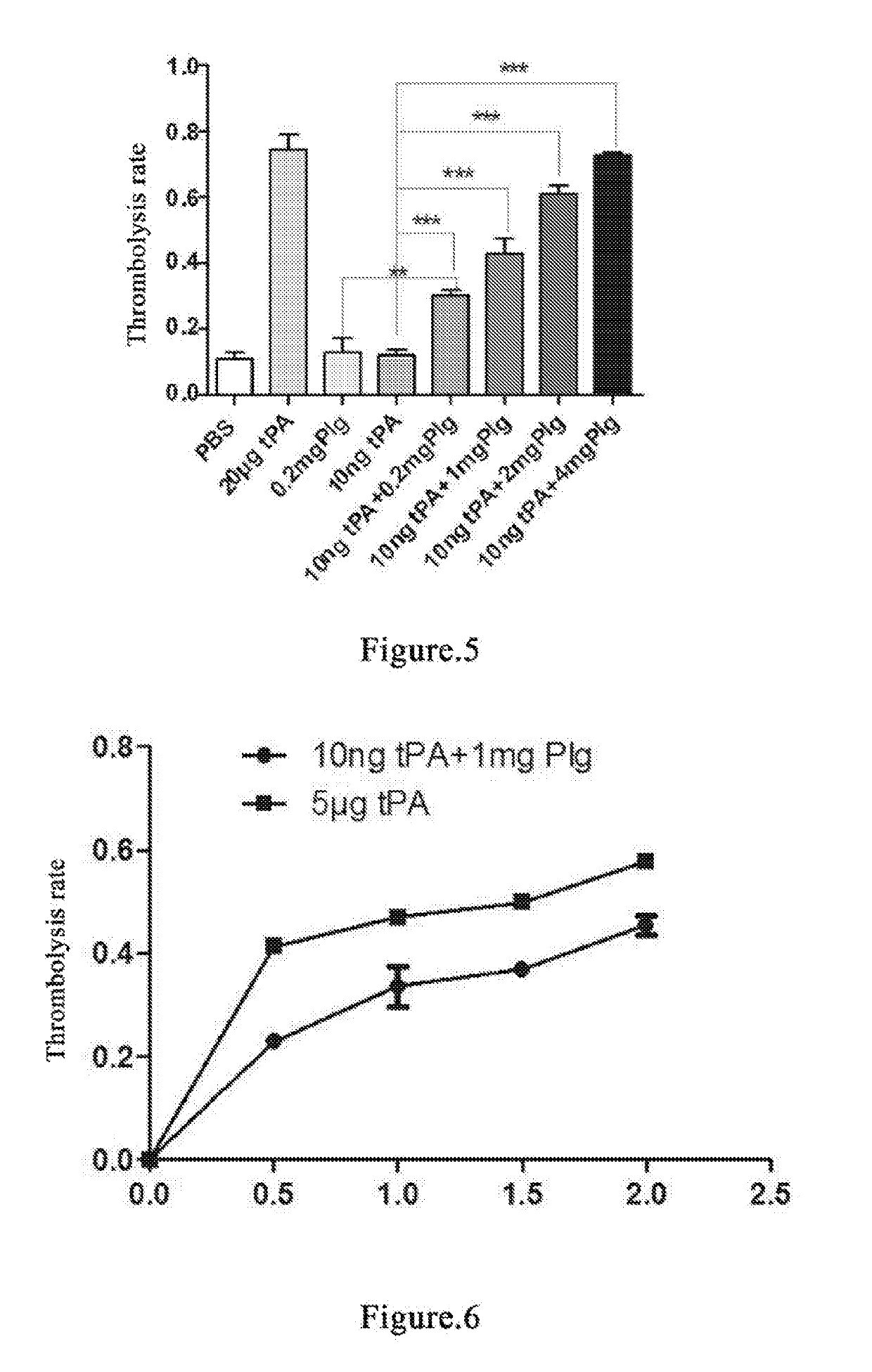Method for prevention or treatment of acute and chronic thrombosis
a thrombosis and acute treatment technology, applied in the field of thrombosis prevention and/or treatment, can solve the problems of limiting the application of thrombolytic drugs, bleeding of thrombolytic drugs, and serious harm to human health, so as to prevent and/or eliminate arterial and venous thrombosis in subjects, and prevent and/or eliminate arterial and venous thrombosis
- Summary
- Abstract
- Description
- Claims
- Application Information
AI Technical Summary
Benefits of technology
Problems solved by technology
Method used
Image
Examples
example 1
Thrombolytic Effect of Different Doses of Plasminogen on 20-Hour Old Thrombus when Incubated at 37° C. for 1 Hour at 125 ng tPA
[0142]Whole blood of two SD rats is individually collected into Eppendorf (EP) tubes and the supernatant is discarded after incubation at 37° C. for 20 h to form old thrombus[33, 34]. Add PBS and wash repeatedly for 5-10 times until the added PBS solution becomes clear. Dry the thrombus with absorbent paper as much as possible. Then place the thrombus evenly in each EP tube and weigh the thrombus. Try to make the weight of each thrombus consistent. The thrombi are divided into PBS blank control group, 125 ng tPA control group, 20 μg tPA control group, 0.2 mg plasminogen group, 1 mg plasminogen group and 2 mg plasminogen group. 3 tubes per group. 1 mL PBS is added in PBS blank control group; 1 mL PBS and 125 ng tPA are added in 125 ng tPA control group; 1 mL PBS and 20 μg tPA are added in 20 μg tPA control group; 1 mL PBS, 125 ng tPA and 0.2 mg plasminogen ar...
example 2
Thrombolytic Effect of Different Doses of Plasminogen on 20-Hour Old Thrombus when Incubated at 37° C. for 2 Hours at 125 ng tPA
[0144]Whole blood of two SD rats is individually collected into EP tubes and the supernatant is discarded after incubation at 37° C. for 20 h to form old thrombus[33, 34]. Add PBS and wash repeatedly for 5-10 times until the added PBS solution becomes clear. Dry the thrombus with absorbent paper as much as possible. Then place the thrombus evenly in each EP tube and weigh the thrombus. Try to make the weight of each thrombus consistent. The thrombi are divided into PBS blank control group, 125 ng tPA control group, 20 μg tPA control group, 0.2 mg plasminogen group, 1 mg plasminogen group and 2 mg plasminogen group. 3 tubes per group. 1 mL PBS is added in PBS blank control group; 1 mL PBS and 125 ng tPA are added in 125 ng tPA control group; 1 mL PBS and 20 μg tPA are added in 20 μg tPA control group; 1 mL PBS, 125 ng tPA and 0.2 mg plasminogen are added in ...
example 3
Thrombolysis Rate on 20-Hour Old Thrombus at 10 ng tPA Increases with Increasing Plasminogen Dose
[0146]Whole blood of two SD rats is individually collected into EP tubes and the supernatant is discarded after incubation at 37° C. for 20 h to form old thrombus[33, 34]. Add PBS and wash repeatedly for 5-10 times until the added PBS solution becomes clear. Dry the thrombus with absorbent paper as much as possible. Then place the thrombus evenly in each EP tube and weigh the thrombus. Try to make the weight of each thrombus consistent. The thrombi are divided into PBS blank control group, 10 ng tPA control group, 0.2 mg plasminogen control group, 0.2 mg plasminogen group, 1 mg plasminogen group and 2 mg plasminogen group. 3 tubes per group. 1 mL PBS is added in PBS blank control group; 1 mL PBS and 10 ng tPA are added in 10 ng tPA control group; 1 mL PBS and 0.2 mg plasminogen are added in 0.2 mg plasminogen control group; 1 mL PBS, 10 ng tPA and 0.2 mg plasminogen are added in 0.2 mg p...
PUM
| Property | Measurement | Unit |
|---|---|---|
| thrombolytic strength | aaaaa | aaaaa |
| concentration | aaaaa | aaaaa |
| affinity | aaaaa | aaaaa |
Abstract
Description
Claims
Application Information
 Login to View More
Login to View More - R&D
- Intellectual Property
- Life Sciences
- Materials
- Tech Scout
- Unparalleled Data Quality
- Higher Quality Content
- 60% Fewer Hallucinations
Browse by: Latest US Patents, China's latest patents, Technical Efficacy Thesaurus, Application Domain, Technology Topic, Popular Technical Reports.
© 2025 PatSnap. All rights reserved.Legal|Privacy policy|Modern Slavery Act Transparency Statement|Sitemap|About US| Contact US: help@patsnap.com



